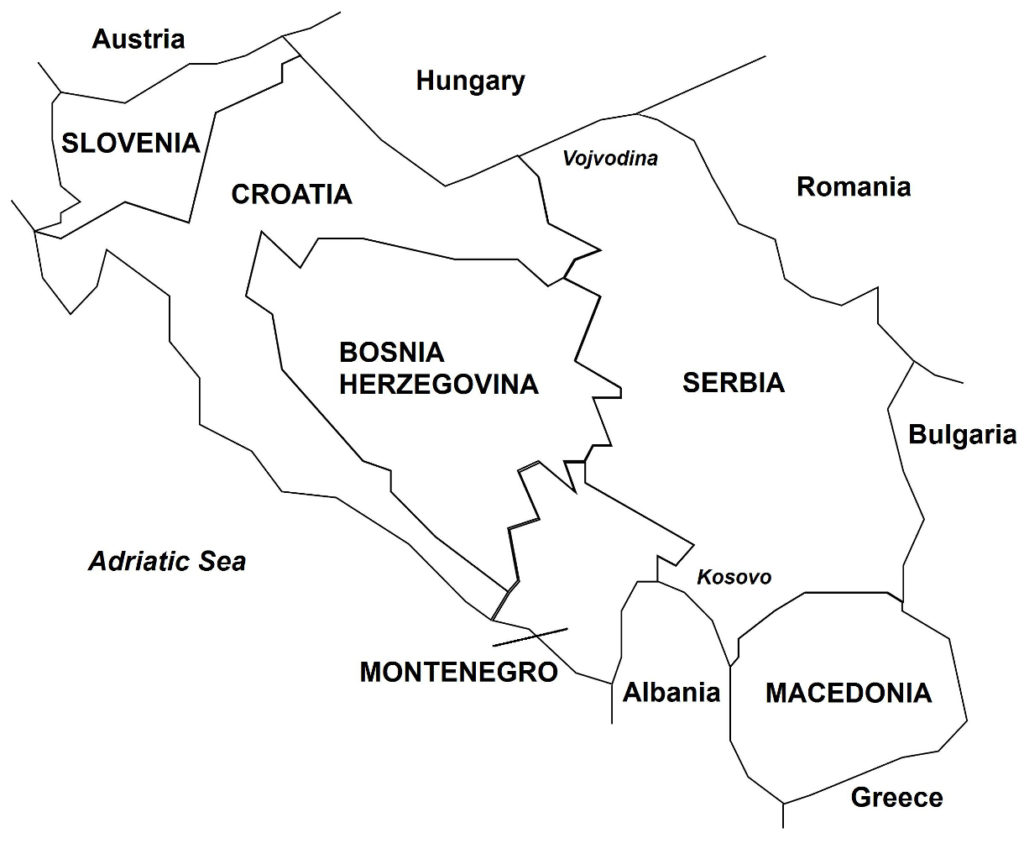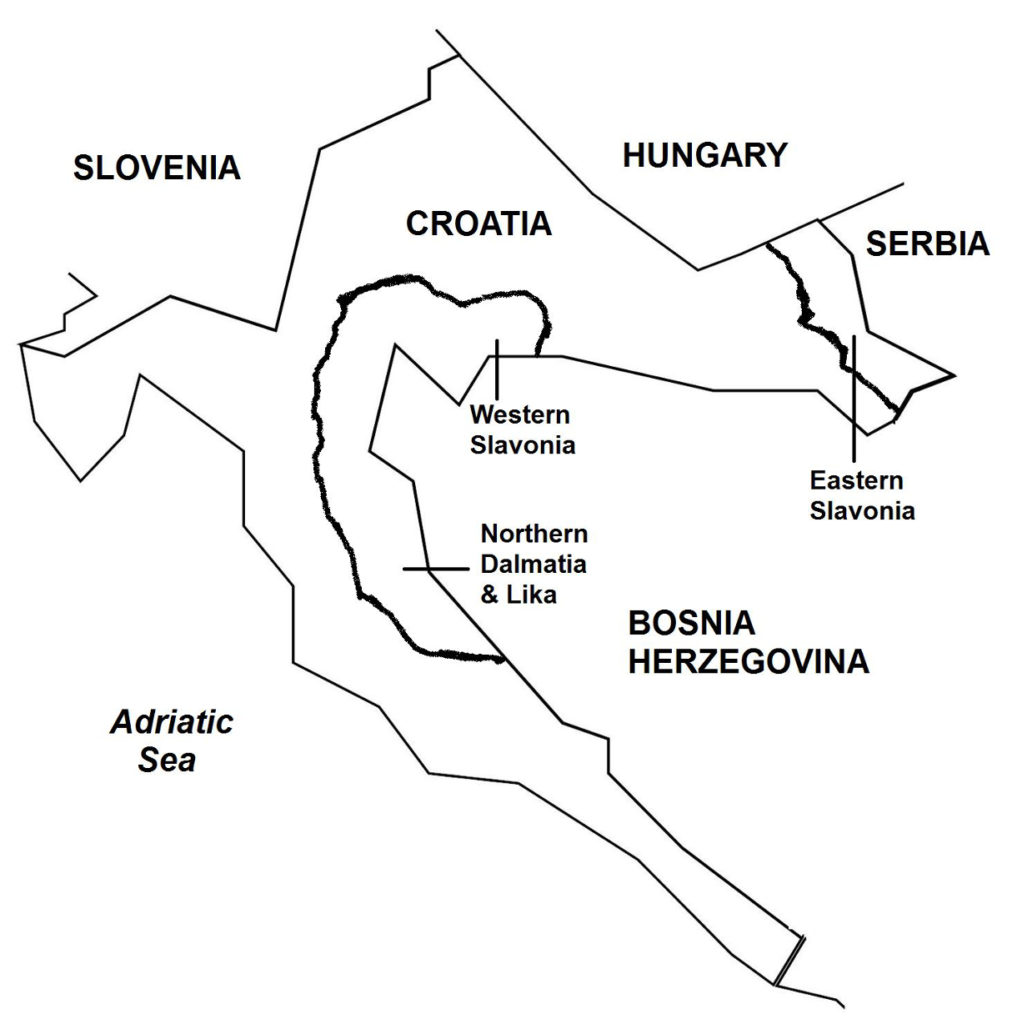By December 1991, the battle lines in Croatia began to settle, as the Yugoslav forces shifted their efforts away from overwhelming Croatia to securing conquered territories for the breakaway Republic of Serbian Krajina (RSK). In turn, the Croatian Army’s counter-offensives made only limited gains. With mediation efforts by the United States, Yugoslavia and Croatia agreed to a ceasefire, which came into effect on January 2, 1992. In compliance with the ceasefire agreement, the Yugoslav Army withdrew from RSK (completed in May 1991) and was replaced by the United Nations Protection Force (UNPROFOR). The UN force established buffer zones called United Nations Protected Areas to separate the warring sides and to demilitarize Serb-held territories. The presence of UNPROFOR prevented large-scale confrontations between Croats and Croatian Serbs for the next three years.

Just before the outbreak of the war, Croatia formed its armed forces from existing police and TO units. However, the Croatians faced a serious shortage of weapons to confront the Yugoslav Army. In mid-September 1991, Croatian units and Croatian defectors from the Yugoslav Army carried out the “Battle of the Barracks”, where they attacked dozens of Yugoslav Army bases, barracks, supply depots, and other military installations across Croatia, and consequently seized large quantities of military hardware including over 600 tanks and armored vehicles, 400 artillery pieces, 100 anti-tank and anti-aircraft weapons, and 240,000 light weapons.
The Croatian government called for a general mobilization, enabling the Croatian armed forces to increase greatly the number of enlisted personnel from 40,000 in August 1991 to 200,000 by the end of 1991. President Tudjman also took advantage of the many ceasefires (15) negotiated by the international community during the first months of the war, readily agreeing to a cessation of hostilities that broke the Yugoslav Army’s momentum and allowed time for the Croatian government to build up its military resources.
The Croatian armed forces increased their predominantly Soviet- and Yugoslavian-made arsenals by making arms purchases from foreign sources; the weapons were then smuggled into the country to circumvent the UN arms embargo. Croatia declared its independence a second time on October 8, 1991, after the three-month deferral stipulated by the Brioni Agreement lapsed. The Croatian state was legitimized when it was recognized by the European Community in January 1992 and admitted to the UN three months later.
By contrast, the RSK did not gain international recognition and its support was limited to a few countries. A European Economic Community arbitration committee upheld the territorial integrity of Croatia, a decision that was reaffirmed later by the United Nations Security Council. Furthermore, the war had a devastating effect on the RSK’s economy, seriously undermining the break-away state’s capacity to continue for long. Its industries ceased to exist while its farm lands were abandoned because of the fighting. Inflation and unemployment soared. The RSK was dependent totally on the Serbian government’s monetary infusions; however, this support diminished as Serbia itself became faced with a devastated economy, as over 80% of its budget was directed to the war effort. With the withdrawal of the Yugoslav Army, the military role for the RSK passed into the hands of the newly formed Croatian Serb Army and the various Croatian Serb militias and the other armed groups from Serbia.

(Taken from Croatian War of Independence – Wars of the 20th Century – Volume 2)
Background By the late 1980s, Yugoslavia was faced with a major political crisis, as separatist aspirations among its ethnic populations threatened to undermine the country’s integrity (see “Yugoslavia”, separate article). Nationalism particularly was strong in Croatia and Slovenia, the two westernmost and wealthiest Yugoslav republics. In January 1990, delegates from Slovenia and Croatia walked out from an assembly of the League of Communists of Yugoslavia, the country’s communist party, over disagreements with their Serbian counterparts regarding proposed reforms to the party and the central government. Then in the first multi-party elections in Croatia held in April and May 1990, Franjo Tudjman became president after running a campaign that promised greater autonomy for Croatia and a reduced political union with Yugoslavia.
Ethnic Croatians, who comprised 78% of Croatia’s population, overwhelmingly supported Tudjman, because they were concerned that Yugoslavia’s national government gradually had fallen under the control of Serbia, Yugoslavia’s largest and most powerful republic, and led by hard-line President Slobodan Milosevic. In May 1990, a new Croatian Parliament was formed and subsequently prepared a new constitution. The constitution was subsequently passed in December 1990. Then in a referendum held in May 1991 with Croatian Serbs refusing to participate, Croatians voted overwhelmingly in support of independence. On June 25, 1991, Croatia, together with Slovenia, declared independence.
Croatian Serbs (ethnic Serbs who are native to Croatia) numbered nearly 600,000, or 12% of Croatia’s total population, and formed the second largest ethnic group in the republic. As Croatia increasingly drifted toward political separation from Yugoslavia, the Croatian Serbs became alarmed at the thought that the new Croatian government would carry out persecutions, even a genocidal pogrom against Serbs, just as the pro-Nazi ultra-nationalist Croatian Ustashe government had done to the Serbs, Jews, and Gypsies during World War II. As a result, Croatian Serbs began to militarize, with the formation of militias as well as the arrival of armed groups from Serbia.
Croatian Serbs formed a population majority in south-west Croatia (northern Dalmatian and Lika). There, in February 1990, they formed the Serb Democratic Party, which aimed for the political and territorial integration of Serb-dominated lands in Croatia with Serbia and Yugoslavia. They declared that if Croatia wanted to secede from Yugoslavia, they, in turn, should be allowed to separate from Croatia. Serbs also interpreted the change in their status in the new Croatian constitution as diminishing their civil rights. In turn, the Croatian government opposed the Croatian Serb secession and was determined to keep the republic’s territorial integrity.
In July 1990, a Croatian Serb Assembly was formed that called for Serbian sovereignty and autonomy. In December, Croatian Serbs established the SAO Krajina (SAO is the acronym for Serbian Autonomous Oblast) as a separate government from Croatia in the regions of northern Dalmatia and Lika. Croatian Serbs formed a majority population in two other regions in Croatia, which they also transformed into separate political administrations called SAO Western Slavonia, and SAO Eastern Slavonia (officially SAO Eastern Slavonia, Baranja, and Western Syrmia). (Map 17 shows locations in Croatia where ethnic Serbs formed a majority population.) In a referendum held in August 1990 in SAO Krajina, Croatian Serbs voted overwhelmingly (99.7%) for Serbian “sovereignty and autonomy”. Then after a second referendum held in March 1991 where Croatian Serbs voted unanimously (99.8%) to merge SAO Krajina with Serbia, the Krajina government declared that “… SAO Krajina is a constitutive part of the unified state territory of the Republic of Serbia”.
